Matador Network's Blog, page 940
January 16, 2020
Rainfall in Australia relieves fires

At long last, Australia might finally be getting some relief. Thunderstorms aren’t typically welcomed with open arms, but given the devastating fires tearing across Australia these past few months, a bout of heavy rain is just what the doctor ordered.
“Although the rain won’t extinguish all fires,” said the NSW Rural Fire Service, “it will certainly go a long way towards containment.”
Relief is here for a number of firefighters working across NSW. Although this rain won’t extinguish all fires, it will certainly go a long way towards containment. This footage was captured down at the Good Good Fire burning near Cooma. #nswrfs #nswfires pic.twitter.com/fxV9u2hN6K
— NSW RFS (@NSWRFS) January 16, 2020
The thunderstorms are actually proving to be a double-edged sword. Parts of the state of Victoria were hit with three inches of rain, causing flash flooding, sinkholes, and some property damage. Over 10,000 houses in New South Wales lost power due to the storm.
More rain is forecast for the end of the week, though it’s unclear whether it will be enough to quell the fires or if it will fall in the right places. 

More like this: How you can help the people and animals affected by the fires in Australia
The post Heavy rainfall brings some much-welcomed relief to Australia appeared first on Matador Network.

Peru deport tourists damaged ruins
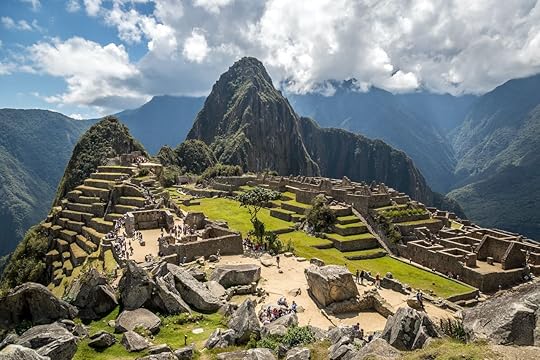
After six tourists allegedly damaged a stone wall and the floor of a temple and defecated at Machu Picchu’s National Archaeological Park, the Peruvian police have deported five to Bolivia and charged one with committing a crime against cultural heritage.
According to a statement by the Peruvian Ministry of Culture, the tourists from Chile, Brazil, France, and Argentina illegally snuck into the ruins of the citadel before dawn on Sunday, January 12. During their intrusion, they caused a rock to fall from a wall in the Temple of the Sun, cracking the floor below. To make matters worse, one of the illegal visitors allegedly defecated in the ruins of the Incan city.
One of the intruders, Argentine tourist Nahuel Gómez, 28, admitted to causing the damage to the Temple of the Sun, and remains in custody in Peru.
Unfortunately, this isn’t the first time the ancient Incan ruins have been disrespected by tourists. In 2014 authorities struggled with a trend of tourists getting naked at the location. 

More like this: Instagrammer thrown in jail for climbing one of Giza’s pyramids
The post Peru deports 5 tourists accused of defiling Machu Picchu temple appeared first on Matador Network.

January 15, 2020
Visit Japan’s Seto Art Islands

Japan‘s Seto Inland Sea is a placid stretch of water cushioned between three of Japan’s main islands — Honshu, Kyushu, and Shikoku — populated by a hazy, pine-cloaked archipelago of some 3,000 islands. Twelve of these, known collectively as the “art islands,” are home to contemporary artworks and exhibits that have become an integral part of the islands’ scenery. They’re found scattered along sandy shores, in the abandoned buildings of ancient villages, and hidden along trails in the dense coniferous forests.
Like most rural, island communities in Japan, the Seto Inland Sea demographics represent a systemic problem: few young people, rapidly declining birth rates, limited education options, and next to no sustainable working opportunities beyond farming and fishing. Rather than simply working art into a sublime setting, this visionary project around the islands looks to breathe new life into these towns and villages that need it most.
Envisioning the Art Islands
Towards the end of the 20th century, the islands’ population was aging and dwindling, and infrastructural development ceased. Billionaire Soichiro Fukutake started to explore the islands in the late 1980s and was startled by their state of disrepair. With the help of one of the nation’s most renowned architects, Tadao Ando, he set to transform Naoshima, now the Inland Sea’s most popular tourist haunt.
This was the beginning of a movement that would permeate across the Inland Sea’s inhabited islands. Since the introduction of the art showcase, the Setouchi Triennale in 2010, new artworks have been introduced to the islands at three-year intervals. Many remain as permanent fixtures. Above all, the art islands are now more appealing and accommodating to travelers than ever before.
Naoshima
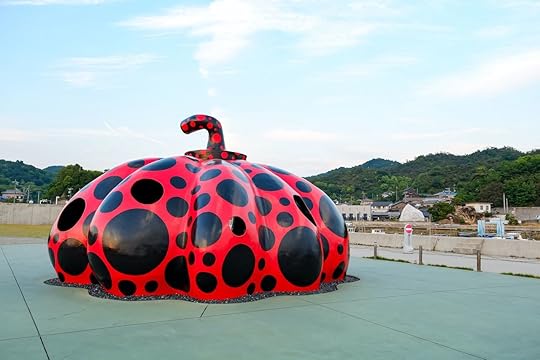
Photo: Carlos Huang/Shutterstock
Naoshima has become the Inland Sea’s most popular destination. Under the tutelage of Fukutake and his Benesse holdings company, the island’s art has thrived to levels of global repute. Inside large edifices created by Tadao Ando (“The King of Concrete”) and erected in thought-provoking settings with stunning seascape backdrops, installations from some of the world’s top artists have flourished.
Ninety-year-old Yayoi Kusama, one of Japan’s leading sculptors and pop-art trailblazers, is responsible for Naoshima’s most enduring image: The Pumpkin. Kusama has been using kabocha (pumpkins) in her art for over 70 years, yet arguably no other has reached the same level of fame as the polka dot kabocha sitting at the end of a pier on the island’s south coast. Another Kusama red and black pumpkin is situated on Naoshima’s eastern side.
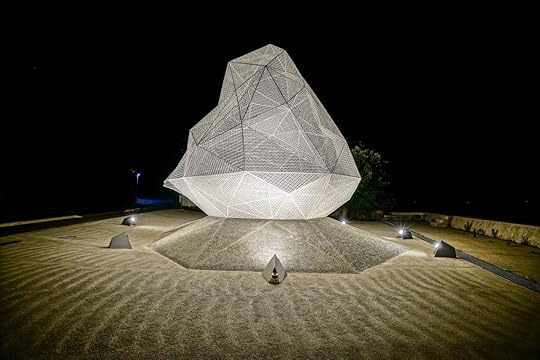
Photo: August_0802/Shutterstock
Andy Warhol pieces are also displayed on the island inside the Museum Restaurant Issen. The Chichu Art Museum, a Tadao Ando creation, showcases the marriage of concrete, space, and light — several original water lilies by Claude Monet are on display here. The Benesse House Museum, arguably the best institution on the islands, is not to be missed, featuring works from popular Japanese artists such as Shinro Ohtake, Hiroshi Sugimoto, and Yukinori Yanagi.
Teshima

Photo: Chatchawat Prasertsom/Shutterstock
Naoshima’s larger neighbor Teshima is also under the influence of Benesse Holdings. Yet in spite of its imposing size, it’s easier to explore and, more importantly, considerably less crowded, particularly in winter. The island’s crown jewel is the Teshima Art Museum. Though it may have nominal shortcomings, aesthetically it’s a marvel.
The elongated, white-domed façade, designed by Hiroshima-based artist Rei Naito and architect Ryue Nishizawa, was intended to represent the shape of a droplet as it hits the surface of water. To me, it looks more like a half-buried spaceship, but both are equally arresting notions. The interior is lofty, airy, spacious, and gleaming white. Dynamic globules of water pool and meander underfoot charged by the breeze, which is funneled through a gaping hole in the exhibit’s roof. It puts the “modern” in modern art and is a clear juxtaposition against the museum’s rice paddy surroundings.
Megijima and Ogijima

Photo: numa0417bb/Shutterstock
The art installations on most of the other islands are under the stewardship of the Setouchi Triennale Executive Committee working in tandem with local prefectural governments (this means that tickets and season passes are also obtained separately). Megijima and Ogijima, two small islands near the coast of Takamatsu city, have consistently displayed new artworks over the past 10 years, starting with the 2010 inaugural Setouchi Triennale.
Megijima is dotted with eccentric installations and abandoned buildings that have been reclaimed by verdant flora. This gives the island a post-post-apocalyptic feel, which is infused with Studio Ghibli-esque creations. “Ebune Drifters,” a walkthrough exhibit in the shape of a shipwrecked houseboat, and “MECON,” a Shinro Ohtake exhibit that has transformed an abandoned elementary school, both appear to take inspiration from the worlds of Hayao Miyazaki. “Bonsai Deepening Roots,” a delightful homage to Japan’s classic miniature botanical art style, is another equally impressive work. And if you’re in Megijima during the Triennale, Setouchi Gastronomy is a great restaurant-cum-artwork, featuring a three-course seasonal meal and cooking tutorial (with translation) using only locally sourced ingredients — there’s no better place to lunch on the island.

Photo: lansa/Shutterstock
Ogijima, just 30 minutes from Megijima, features a scattering of artworks along the steep trails of a compact portside village. The “Onba Factory” showcases a menagerie of strikingly peculiar onba (walking aids). These double up as pieces of art that offer tangible benefits to the aging local populace. The visitor center here is a work of art in itself — a concrete island in a pool of glassy water with a latticework roof of Roman letters.
Both islands have new artworks added each time the Setouchi Triennale comes around. New exhibits for the 2022 edition will be revealed in due course.
Oshima
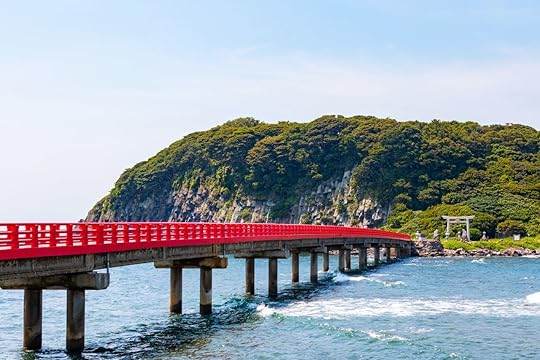
Photo: Nita Limo/Shutterstock
There are plenty of other art islands that are just as much worth your patronage: Inujima, Shodoshima, and the port city of Takamatsu have all succumbed to the art fever. Yet if there’s one island that really separates itself from the rest, it’s Oshima, home to Japan’s only island leprosarium.
The main complex, which used to be a sanitorium for people with leprosy, has been transformed by local artists into an immersive museum of walkthrough exhibits that detail the islands initially horrifying, yet more recently uplifting, history. The final piece on the island, “Ringwanderung,” is particularly memorable — a hike over the hills through bamboo groves and past scenic sea views with plaques on which quotes from victims of leprosy are etched. It’s stunning and touching in equal measures.
Getting to the Art Islands
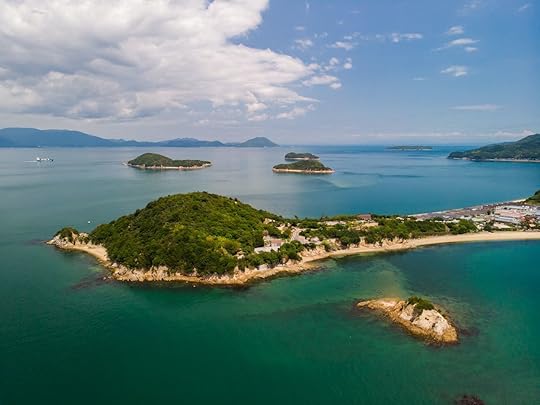
Photo: SAND555UG/Shutterstock
Takamatsu in Shikoku is a popular stop-off point for travelers, with plenty of accommodation options and boats to the major islands. If you stay here, be sure to slurp up some udon noodles; they are a specialty in the local prefecture, Kagawa.
Uno, a port city situated on Japan’s main island, Honshu, is only a 20-minute ferry ride from Naoshima and is equally popular with visitors staying near the art islands. Both cities are accessible by plane or bullet train from major cities like Tokyo, Kyoto, Osaka, and Hiroshima.
Benesse Art Site information can be found on their website (opening times, closed days, and ticketing information). Setouchi Triennale information can likewise be found online. Note: Outside of the Triennale season, limited artworks may be available on non-Benesse islands. Oshima artworks are usually open on the second Saturday and Sunday of each month. 

More like this: How to dive in to Amsterdam’s vibrant street art scene
The post On Japan’s Seto Islands, the art is fun, modern, outdoors, and everywhere appeared first on Matador Network.

Best things to do in Tohoku, Japan

Japan’s popularity among travelers comes as no surprise to anyone as the archipelago is overflowing with natural beauty, historical sites, delicious food, and unique experiences. Most itineraries are focused around the major cities of Tokyo, Kyoto, Hiroshima, and Osaka, and while those cities definitely deserve all the praise and attention they receive, with 47 prefectures that are divided into eight separate regions, Japan has way more to offer. The northeastern Tohoku region in particular packs just as much of a punch as its big-city counterparts — and with just a fraction of the crowds. While six distinct prefectures make up the Tohoku region, the three prefectures of Yamagata, Miyagi, and Iwate are easily reachable from Tokyo in a couple of hours on a Shinkansen and have a perfect mix of sights for every type of traveler. Whether you decide to visit just one of the prefectures or combine all three, here are the coolest things to do and see in each.
Yamagata Prefecture
Nature abounds across the Tohoku region but perhaps none more so than Yamagata Prefecture. It’s home to one of the most spiritual areas in all of Japan, the Dewa Sanzan, otherwise known as the Three Mountains of Dewa. The trio of mountains — Haguro, Gassan, and Yudono — is one of the homes of the Shugendo faith — a mix of Buddhism, Shintoism, and Taoism — and represents the present, past, and future respectively.

Photo: Manuel Ascanio/Shutterstock
It’s said that a Dewa Sanzan trek should begin in the present at Haguro. The hike is only a mile long, but visitors will pass through a forest of tall cedar trees and see multiple small shrines dedicated to different deities: the Jiji-sugi, or “Grandpa Cedar Tree,” which is the oldest giant tree at Haguro at over 1,000 years old; a five-story pagoda, which is the oldest pagoda in Tohoku and the structure on which the Tokyo Skytree was based on; and the Sanjin Gosaiden shrine at the summit, where all three mountain deities are enshrined. Living on Haguro are yamabushi, Shugendo mountain priests clad in white clothing who practice an ascetic lifestyle and frequently blow the conch shells they carry to protect the mountains and people from evil spirits. There’s a museum near the beginning of the trail for those that would like to learn more about the faith and Dewa.

Photo: Aryana Azari
Next is Gassan, the tallest of the three mountains at 6,509 feet high. Visitors are able to take a bus from its base to the Eighth Station where they can then begin a three-hour hike through marshland and alpine meadows to the shrine at the summit. Last but not least is Yudono, with its hot springs and waterfalls. Visitors can either opt to take a bus from the base up to a parking lot close to the summit — though there is a final portion that requires some walking — or trek the entire way. Yudono is the most sacred, and because of that, no photos are allowed beyond the main torii gate, and talking of what one sees and does on it is prohibited. But rest assured, it’s beautiful, spiritually invigorating, and worth it.
In terms of accessibility, only Haguro is open year-round for hiking, with Gassan and Yudono open from summer to late fall. Buses run regularly throughout the week from nearby Tsuruoka Station to Haguro, from which you can take a bus to Gassan. Visiting Yudono is only possible on weekends, and you can either take a bus from Haguro or hike from Gassan, which will take about six hours.

Photo: wandererronin/Shutterstock
Beyond the Dewa Sanzan is the Mogami River, one of the three fastest rivers in Japan that’s well-known for appearing in several of famous poet Matsuo Bashō’s haikus. A boat ride along it will allow visitors a chance to relax for an hour or two while taking in some of the scenery, which changes dramatically depending on the season. The longboats will usually be shared with other groups and are always led by a licensed guide who’ll sing traditional river songs throughout the trip. While drifting along the Mogami River you’ll spot waterfalls, torii gates, shrines, and even a floating convenience store that the boat will stop at — where things like meat skewers, cherry blossom ice cream, and sake are sold.

Photo: Shonai Hotel Suiden Terrasse/Facebook
To put yourself in the best position to see all Yamagata has to offer, you should either stay in the city of Tsuruoka, where you can experience things like eating Japanese-Italian food at Al Ché-cciano or sleep in a hotel that “floats” on rice fields; in one of the temple lodgings the Dewa Sanzan offers; or in Ginzan Onsen, a hot spring town that’s right near the border to Miyagi Prefecture.
Miyagi Prefecture
Where Yamagata is nature-oriented, Miyagi is more urban, geared toward culture and history. It’s in the Miyagi Prefecture that you’ll find yourself wandering museums, ruins, and historical sites while still getting in some of the great outdoors.
Miyagi’s capital is Sendai, the largest city in northeast Japan. As it was founded in 1600 by Date Masamune, a feudal lord part of the Date samurai clan, it would be a disservice not to begin a tour of the city by following its samurai roots. Start out with the ornately decorated Zuihoden mausoleum, the sacred burial site of the Date clan. Adjacent to the mausoleum is a small museum housing historical documents and details of the archaeological work done around the site. Just a short distance away is the Sendai City Museum, a larger museum that holds artifacts pertaining to Sendai’s history, including Date Masamune’s armor and helmet; while not confirmed, the all-black, over-400-year-old armor is said to have inspired Darth Vader’s outfit in Star Wars.

Photo: Aryana Azari
The museum is located on the grounds of the former Sendai Castle, also known as Aoba Castle, built by Masamune. Its location on Mount Aoba was chosen specifically for its strategic defensive position, towering around 300 feet over Sendai, with protection on nearly all sides by cliffs and forest. Years of natural disasters chipped away at the castle, leaving only a single lookout tower and the outer walls. A statue of Masamune on his horse was erected on the site in his honor and still stands to this day. Beyond the ruins is a lookout point where all of Sendai can be seen. Interspersed between all the buildings are hundreds of trees, providing insight into why Sendai’s nickname is the “City of Trees.”

Photo: Shoukeikaku
All of the Date sites in Sendai can be reached by the Loople bus, which has a single route that loops through all of Sendai’s major tourist spots, such as Jozenji-dori Avenue, the Museum of Natural History, and the Miyagi Museum of Art. If you’re willing to trek out to Sendai’s outskirts, however, then visiting Shoukeikaku to fuel up is a must. Now a restaurant, Shoukeikaku was the Date clan’s former residence. The restaurant’s specialty is multiple dishes served in a traditional, handcrafted Sendai tansu (a chest of drawers). Reservations are required, and it’s a little pricey, but the unique experience is well worth the money. Sendai is also known for its nightlife scene, with alleys upon alleys full of izakayas just waiting for barhoppers.
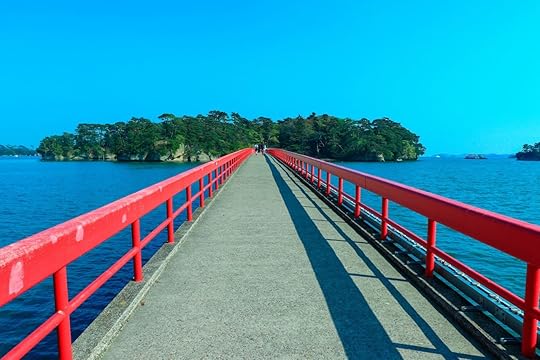
Photo: hiroyuki_K/Shutterstock
Just an hour from Sendai is the coastal city of Matsushima, more akin to a laid-back beach town than an urban hub — perfect for relaxation and sightseeing at an easygoing pace. There are several Date-related sites here as well, like Zuiganji, a Zen Buddhist temple that Masamune appointed as his family’s temple; the Date Masamune Historical Museum, which follows Masamune’s entire life; and Entsuin Temple, built by Date Terumune, with sprawling gardens that look especially magical when the leaves are lit up during an annual event every fall.
While visiting Matsushima can be done as a day trip from Sendai, it’s worth a few days’ time to explore some of the 260 islands in its bay and allow for proper relaxation if that’s what you’re after. Ferry and cruise services around the islands are available, though three of them are accessible on foot via long bridges. The bridge connecting Matsushima to Fukuura Island has a legend attached to it that says if you cross it, you’re likely to meet the love of your life.

Photo: Aryana Azari
For those unwilling to try their luck at love in Matsushima, then panning for gold is the next best bet. A similar distance away from Sendai as Matushima is Wakuya, a small town of about 20,000 residents, famous for being the place where gold was first mined in Japan over 1,000 years ago. The town set up a museum detailing the history of gold in Japan, Tempyo Romankan, which also offers visitors a chance to go gold panning and keep any gold they’ve found.

Photo: Aryana Azari
Adjacent to the museum is a small but idyllic park that, if you follow along the path for a few minutes, leads to the Koganeyama Shrine, dedicated to deities of money, fortune, and prosperity. To the left of the shrine is the Kugane tea house and garden, where you can partake in a traditional Japanese tea ceremony and try some matcha and sweet treats. The tea house also has a room with a wall covered in gold leaf.

Photo: Aryana Azari
Visiting Wakuya allows you to head straight on to Iwate Prefecture. If you’re staying in Sendai, it’s a good idea to stay near Sendai Station so you can easily access the train system, both Shinkansen and local, and explore the rest of Tohoku. If you really want to be close, there’s Hotel Metropolitan, three-star digs literally inside the station. It’s important to keep in mind that train stations in Japan close overnight, so you’ll have to go through a different entrance if you decide to stay out late. While the hotel is clean, comfortable, and won’t break the bank, there are other nearby accommodation options from capsule hotels to more luxe options, should you desire an alternative.
Iwate Prefecture
Whether or not you came out a winner at Wakuya, celebrate (or drown your sorrows) in Iwate Prefecture. Iwate is big on agriculture, being a major rice-producing region with some of the purest water, which lends itself to making some of the highest-quality rice products in Japan. One such product we all know and love is sake, for which Iwate is famous.
There are a number of sake breweries that offer tours of their facilities, as well as tastings. One such brewery is Sekinoichi, which dates back to the Edo period and has since branched into craft beer. It has a large tasting area where you can try different types of sake, from dry to sweet and everything in between, and the shop sells all of Sekinoichi’s products. On the same site as the brewery is a museum where visitors can learn all about brewing and a restaurant that serves local cuisine and different types of sake.
Another well-known rice product that Iwate is famous for is its mochi, a glutinous rice cake with a taste that can either be sweet or savory depending on the added ingredients and toppings. The city of Ichinoseki in Iwate is known as the holy ground of mochi, and every year it holds the Mochi Festival (formerly known as the Mochi Summit), where people from all over Japan come together to show off their local mochi.

Photo: mrandre/Shutterstock
While mochi can be tried in many places around the world now, one of the coolest ways to try it is by visiting Geibikei Gorge in Ichinoseki. The gorge itself, part of the Iwai River, is a magnificent natural geological formation about 1.5 miles long. Boat tours through the gorge, either 30 or 70 minutes long, are offered, but you’ll also want to visit on foot for the mochi.

Photo: Aryana Azari
The gorge is known for “flying dango” — dango are a type of Japanese dumpling in the mochi family. The name “flying dango” comes from the method to retrieve the dango: On one side of the gorge is a gazebo where a basket is hanging on a cable that goes to the opposite side, and to order dango, you have to put 400 Japanese yen into the money holder inside the basket, knock on the wooden board next to the basket with a hammer to let the shop workers know you’re ready, and wait as the workers pull the basket across and then send it back with your dango inside.
Close to Ichinoseki is the town of Hiraizumi, and while it’s also popular for mochi, it’s even more so for its historical and cultural sites that earned it a designation as a Unesco World Heritage site — which also happened to be Tohoku’s first UNESCO site. While all its sites deserve a spot on your cultural Tohoku tour, two stand out in particular. First is Mōtsū-jī Temple, a sprawling temple complex founded in the seventh century by the priest Ennin and used by the Fujiwara clan. All the original buildings have been destroyed, and what’s left are the ruins of certain structures like gates and temples, several reconstructed shrines, and the original Pure Land garden — called such because it was designed in accordance with the Buddhist concept of pure land, the world of the Buddha. In addition to its historical significance, the complex is full of greenery where you can pop down for a picnic, read a book, or even take a snooze.

Photo: yspbqh14/Shutterstock
The second is close to Mōtsū-jī Temple, Chūson-ji Temple, also founded by Ennin and commissioned by the Fujiwara clan. Its design represents the Buddhist pure land to console the souls of people who died in two major conflicts that occurred toward the end of the 11th century. As with many older temples, a number of its original structures were destroyed, but some still remain, and others were reconstructed. Chūson-ji contains more than 3,000 national treasures, including the Konjikidō, a golden hall that’s almost entirely covered in gold leaf.

Photo: 花巻温泉/Facebook
Iwate has an abundance of accommodations with onsens, which you can make your base for exploring the prefecture and then have the added bonus of soaking in hot spring water to heal from the day’s activities. Hanamaki is a city right in the center of it all, providing easy access to Iwate’s main sites, and has a train station with trains that’ll take you to the rest of Tohoku and to Tokyo. Within the city is Hanamaki Onsen, a hot spring village, made up of three interconnected hotels — Hotel Senshukaku, Hotel Hanamaki, and Hotel Kyokan — and a serene rose garden with over 6,000 roses of 150 varieties. The three hotels each have rooms from traditional Japanese-style to Western to a hybrid of both, shops, dining areas, and onsens that have both indoor and outdoor portions. Regardless of which one you stay in, you’re allowed to use the facilities at the other three by using the indoor walkways. The best part? Each room comes with yukatas and slippers, so you can walk around as comfortably as can be. 

More like this: The most beautiful houses in Japan you can rent
The post Lesser-known Tohoku is the perfect place to experience Japan’s tranquil side appeared first on Matador Network.

Best things to do in Oregon

The great food scene of Portland, rivaling those in San Francisco and New York, is one of the reasons more than 30 million tourists visited the city and its area in 2018. But the vast majority of those visitors never reach the state’s high country and vast coastal expanse — and it’s quite a shame. Oregon is stunningly beautiful, a landscape of rocky coast and the towering Cascade Mountains. Outside Portland, the state is rich in cultural and historic attractions, as well as beautiful natural spots, unknown to most people beyond the state’s rural residents. You’re missing out if you don’t check out these spots.
1. Cape Perpetua and Thor’s Well
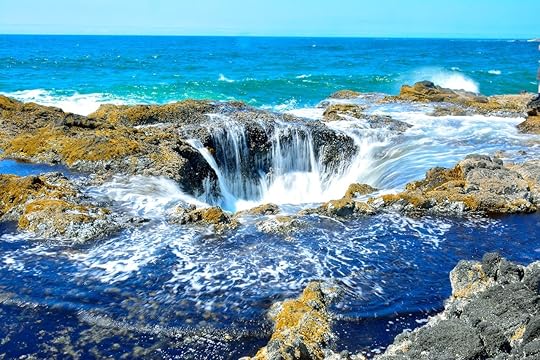
Photo: KhanhTran09/Shutterstock
This stretch of the state’s central coast is rugged even by Oregon standards. The steep sides of forested and grassy mountains stop just shy of the ocean, separated from the foaming water by a slim stretch of rough volcanic rock. Here, the water hits land and spurts several feet high in a split second, the ocean emitting a constant roar as waves crash into the rock. Even on a cloudy day, the natural landscape is quite the sight. Being just a few hours from Portland, Cape Perpetua and Thor’s Well are doable in a day, which you can make even more scenic by extending the drive up the coastal 101 Highway south of Portland on either the way down or the return trip north. Thor’s Well resembles a swirling drain right in the middle, water tumbling through and over the rocks.
Driving distance from Portland: three hours, 150 miles
2. Newberry National Volcanic Monument

Photo: kojihirano/Shutterstock
Oregon is volcanic land, and at Newberry, an active and massive shield volcano, this fact is front and center. Located 20 miles south of Bend, this national monument has many of the signature characteristics of the Pacific Northwest, including extensive evergreen forests and deep blue lakes, though here these are coupled with very specific volcanic geological formations, some more evident than others.
The Big Obsidian Flow, for example, is quite the sight. Created 1,300 years ago at Newberry’s most recent eruption, it was a daunting flow of lava that consumed a massive portion of forest. From a distance it looks like melted wax on top of a carpet. Up close, though, the lava shows itself to be made up of huge rocks made of obsidian, black volcanic glass.
Three distinct lava tube systems, basically underground tunnels created by flow after flow of lava, make for another original sight. Their entrances are from small caves and are easy to miss in the undulating landscape. The tunnels’ dimensions keep changing, surfaces alternating between rough and smooth and sometimes slightly shiny, depending on how the lava cooled in that specific spot.
Driving distance from Portland: 3.5 hours, 186 miles
3. Hells Canyon Wilderness
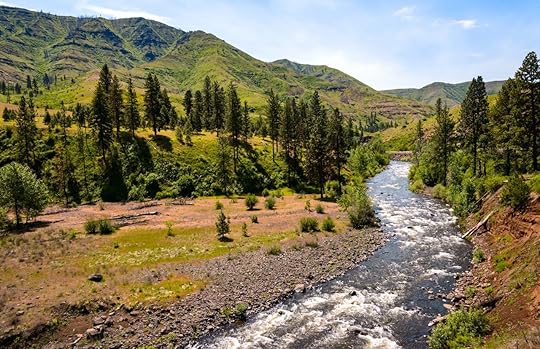
Photo: Zack Frank/Shutterstock
Located in the northeast corner of Oregon along the border with Idaho, Hells Canyon Wilderness is a secluded natural area emblematic of the Pacific Northwest’s beautiful terrain. The gem among these lush, mountainous landscapes is Hells Canyon itself, created by the Snake River as it wound its way through what is now America’s deepest river gorge over the course of millennia. The canyon is isolated and inaccessible by road, rich in wildlife, and covered by forests. Activities like kayaking, hiking, and hunting make it a quiet yet somewhat active area since motorized and mechanized vehicles are not allowed.
Driving distance from Portland: 8.5 hours, 450 miles
4. Neskowin Ghost Forest

Photo: Written In Silver Visuals/Shutterstock
Neskowin lies along the northern Oregon coast. A long time ago, the land was dramatically changed by tectonic movements, and the forested coastline ended up under sea level. A massive storm in 1998 unearthed the long patch of tree stumps that you’ll see now on a visit. They could, at least from a distance, be mistaken for rock formations, but at a closer look, the shape and form are recognizable. This expansive spread of narrow stumps sticking out of the sand, or the water at high tide, is quite the eerie sight. Add in the Oregon coast’s often unpredictable weather, and the view gets even more otherworldly with a layer of fog or during a storm.
Driving distance from Portland: two hours, 98 miles
5. Clear Lake

Photo: Dennis Adams Creations/Shutterstock
One of the clearest lakes in Oregon, hence its name, Clear Lake is easily reachable as the McKenzie Highways runs along its side. Created mostly by snow run-off from the Mt. Washington area just to the east, this is one of the best places in Oregon for diving in because the visibility is so exceptional. The view from above, a wall of tall pines surrounding the lake up to its shores, is in stark contrast with the smooth and empty lakebed in hues of sapphire and aquamarine. Submerged, long tree trunks still standing in the calm waters sometimes appear.
Driving distance from Portland: 2.5 hours, 122 miles
6. Tamástslikt Cultural Institute
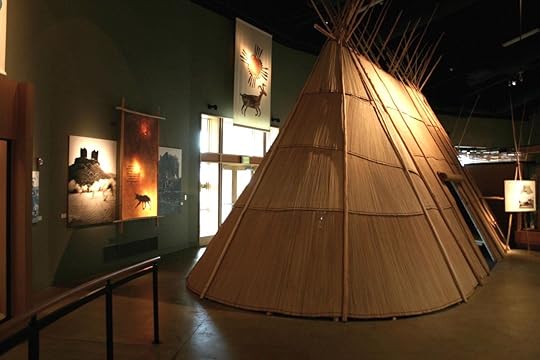
Photo: The Museum at Tamastslikt Cultural Institute/Facebook
Sitting along the Oregon Trail, the Tamástslikt Cultural Institute is its only tribal-run Native American museum, located within the Umatilla Reservation, an area where many tribes have lived for thousands of years. The Institute was also developed by tribe members, aiming to tell history from a Native American point of view; tamástslikt means “interpreting our own story.” The Institute has three permanent exhibits to showcase the past, present, and future of many Native American tribes’ art, folklore, and other aspects of their rich culture.
Driving distance from Portland: 3.5 hours, 217 miles
7. Evergreen Aviation & Space Museum

Photo: Png Studio Photography/Shutterstock
Near McMinnville is the Evergreen Aviation & Space Museum, an ideal spot for those super passionate about aviation, as well as normal, but curious, people. The exhibit is hosted in a huge, brightly lit hangar. This allows you to roam around and enjoy the pieces, making it also a family favorite. The museum displays dozens of aircraft, from the designs of the famed Wright brothers to modern ultralight helicopters to the famed Lockheed SR-71, the world’s fastest, manned aircraft — otherwise known as the “Blackbird.” The original Spruce Groose is here too, a massive airplane built entirely from wood and a wartime relic that stands as a testament to American grit and industry.
Driving distance from Portland: one hour, 35 miles
8. Columbia River Maritime Museum

Photo: steve estvanik/Shutterstock
The Columbia River Maritime Museum is located along the Astoria shoreline in the very northwestern corner of Oregon at the mouth of the Willamette River. It is a showcase of history both interesting and dramatic, and it is the state’s only maritime museum. Exhibits focus on the Columbia River Bar, also known as “The Graveyard of the Pacific,” one of the world’s most dangerous passages. In the last 50 years, it has caused more than 2,000 vessels, including 200 larger ships, to sink.
Driving distance from Portland: two hours, 100 miles
9. Mt. Hood Railroad

Photo: Karin Hildebrand Lau/Shutterstock
The short line connecting the Hood River — straight east from Portland along the Columbia River Gorge — to Parkdale is a historic railroad that takes trains through the quiet landscape at the base of Mt. Hood to its north. The landscape is surprisingly varied as it’s a constant and sudden change from apple orchards to forests to vineyards. Springtime is quite a sight as everything is blooming, and the orchards are explosions of white or pink. Likewise in autumn, the multitude of colors makes it more special.
Driving distance from Portland: one hour, 63 miles 

More like this: 8 ways to keep your costs down on a trip to Portland
The post 9 natural and cultural sites you’ll miss in Oregon if you only see Portland appeared first on Matador Network.

Want to stay fit on the road?

Losing weight and getting fit are consistently among the most common New Year’s resolutions, but they’re also the most commonly broken. It’s tough, after all, to maintain a healthy routine when work, family, and social lives are the priority and never mind traveling, which is notorious for thwarting people’s workout regimens.
Traveling is not innately conducive to fitness, per se, but there are realistic ways to work exercise into an itinerary, such as picking Airbnbs with good fitness facilities. Airbnb is beginning to catch up with the hotel industry in terms of its fitness offerings. Hosts are getting creative and going to great lengths to accommodate their guests’ health needs — some even offering up their own gym memberships and giving out complimentary yoga classes.
Here are some of the best Airbnbs with fitness facilities you should book in 2020.
1. A shared gym, pool, and sauna in Melbourne, Australia

Photo: Airbnb
Paul’s modern pad in Melbourne, Australia, comes with access to the building’s shared gym, heated pool, and sauna, making it entirely possible to go for a run on the treadmill or swim a few laps in the pool before stepping out the front door for an espresso. And whatever isn’t located within walking distance of this centrally located, two-bedroom apartment is merely a charming tram ride away.
2. A loft that doubles as a boxing gym in Cologne, Germany

Photo: Airbnb
Jens’ edgy Cologne apartment is basically a playground of its own, outfitted with everything from saxophones to snowboards. Perhaps its quirkiest quality, though, is not the street art-inspired murals or the hammock, but the punching bag that hangs from the living room ceiling. In addition to the fitness equipment inside the apartment, which includes yoga mats and gymnastic rings, the host also offers up his personal CrossFit membership to guests for free.
3. A ski-in, ski-out studio in Saint-Martin-de-Belleville, France

Photo: Airbnb
Having to ski down a mountain for dinner is guaranteed to get anybody moving. The views of the surrounding 3 Valleys ski area (the biggest in the world) from this contemporary, ski-in, ski-out studio are enough to beckon a bonafide couch potato to the slopes. The area caters to any level of skier and there are several nearby ski schools for first-timers, too. Gear rentals are available in the building and additional gym facilities — including a pool, steam room, squash, and more — are just a few minutes away.
4. A surf shack in Sagres, Portugal

Photo: Airbnb
On the opposite side of the climate spectrum, there are the blissfully sunny beaches of Sagres, Portugal, which is where this upscale surf shack — a restored fisherman’s house — is located. Surfboards and beach cruisers are available to rent from the host for around $3 to $5 per day. When guests aren’t out swimming, cycling, or shredding the gnar, they can pass the time by doing yoga on the sundeck, napping in the hammock, or gathering around the firepit with a glass of wine. The Wave Garden has only three bedrooms but sleeps a whopping seven guests.
5. A yoga-centric loft in Austin, Texas, US

Photo: Airbnb
The only Airbnb Plus rental on the list is this sun-drenched loft in quirky Austin, Texas. The spacious common area, with a big, open hardwood floor, is adorned with exercise balls and yoga mats for midafternoon savasana. In the backyard, there’s a cozy fire pit and a trampoline for the kids — or adults. Inside of this contemporary house — earning of its Plus status — are three bedrooms boasting a total of four beds. The airy, open-plan kitchen will make it easy to follow through with healthy eating resolutions, too.
6. A high-rise apartment with a shared gym in Brooklyn, New York, US

Photo: Airbnb
A hotel room in New York City can easily cost $300, but this upscale Brooklyn abode is a fraction of that price while still including access to a shared gym and lounge where guests can play billiards and ping pong. Its floor-to-ceiling windows provide ample natural light, a major bonus for any New York City apartment. All that sunshine and open space make morning meditation sessions almost obligatory before heading out for the day.
7. An indoor climbing oasis in Steamboat Springs, Colorado, US

Photo: Airbnb
This Steamboat Springs lodge is surrounded by ski hills and geothermal hot springs, but inside is an adventurer’s paradise, too. In addition to the pool, foosball, and ping pong tables scattered throughout the sprawling cabin that’s big enough to sleep 16 or more, there’s also a 14-foot indoor climbing wall for late-night bouldering sessions. This house is part of a larger complex called The Porches, which has a shared gym, heated pool, hot tubs, and kids’ playroom on site.
8. A couple’s spa retreat in Mornington, Australia

Photo: Airbnb
Tourists flock to Mornington, Australia, for its picturesque hot springs from which this very-zen Airbnb is just down the street. Its luxurious setup — including a semi-outdoor hot tub (with its own mini waterfall) and a private home gym with an incline machine, a cross-trainer, an exercise bike, and yoga mats — is conducive to a comprehensive wellness weekend.
9. A lakefront getaway in Ithaca, New York, US

Photo: Airbnb
This rustic loft is about as close to a treehouse as they come, with every window (and there are many) offering views of the lush foliage outside. The upstairs patio looks out over Cayuga Lake and the private dock, which is equipped with two kayaks and a paddleboard. Visitors who stay for four or more days may also book a week-long meditation course with the host, who is a certified transcendental meditation teacher.
10. A yoga loft in Newtown, Connecticut, US

Photo: Airbnb
This charming loft in Newtown, Connecticut, sits atop the hosts’ very own yoga studio, where guests are encouraged to join in on classes free of charge. Private lessons are also offered for an extra fee. The big yellow “barn,” as the hosts call it, sleeps up to three and is equipped with easels and a drafting table for playing around between sun salutations. 

More like this: The 25 places you need to travel in 2020
The post Airbnbs with fitness facilities that you should be booking in 2020 appeared first on Matador Network.

Best local group tours in Barcelona

It’s easy to fall in love with Barcelona’s beaches, parks, shopping, and fine gastronomy. Add in the happening cultural scene, charming nearby villages, and architecture, and it’s no surprise that more than 30 million tourists visit every year, which is 18 times the total population. Imagining a crowd of that size is difficult, and trying to find a free spot on La Barceloneta, Barcelona’s main beach, during the high season is even harder.
While mass tourism is a real challenge in the city, it’s still possible to explore and enjoy Barcelona in a sustainable and authentic way. Many exciting local companies have popped up that offer sustainable travel experiences that support the economy, the environment, and the city’s creative entrepreneurs.
1. Celebrate something special (or life in general) on a picnic.

Photo: Picnic Barcelona/Facebook
Take in Barcelona’s ambiance on a secluded picnic with Spanish wine, artisanal cheese, and local delicacies from family-run providers. The idea of getting to know Barcelona in a different way is what Picnic Barcelona is all about. Founded in 2014, the brand is an upgrade on the traditional picnic — why else would you pay someone to arrange one, after all — with an elaborate, hand-picked menu to ensure that you end up at the right place with the right basket for your proposal, birthday, event, or a treat on a regular day (don’t we all need those sometimes?). This is a great option if you’re looking to escape the crowded markets and restaurants without sacrificing good food and being surrounded by incredible architecture.
2. Experience football culture like an insider.

Photo: Yuri Turkov/Shutterstock
Whether or not you’re a football fan, there’s something special about experiencing the 99,000-seat Camp Nou stadium like an insider. Run by a team of sports journalists who cover the games, Visit Camp Nou lets you explore Europe’s biggest stadium as if you were about to play a game with FC Barcelona. Access the changing room, the tunnel to the field, the benches, and the trophies room. Learn about the club’s history and tactics, as well as where the motto of Barca (“More Than One Club”) really comes from.
Along with visiting Camp Nou, the tour digs into the city’s sports culture. From the Colón area to the restaurant of legendary player Luis Suárez, you’ll see how football culture is reflected all over the city. Private experiences can be arranged too, such as meeting in a bar before a game to discuss strategies over a caña (beer). It doesn’t get much more FC Barcelona than that.
3. Choose between tapas or biking and photography.

Photo: Littleaom/Shutterstock
Photo Bike Tour Barcelona started after the founder, Alfredo, returned from a two-year, round-the-world trip. Centered around photographing the city’s most popular sites, the tour takes visitors around the city on electric bikes. The standard four-hour Discover Barcelona tour explores highlights all over the city, and the electric bikes make cruising down the streets in groups of four to six people a seamless experience. The tour stops at places to eat along the way, though if you’re more about food than architecture, the walking Tapas Tour is a better option. On the latter, you’ll try local specialties matched with Spanish cava. Just be careful — you might end up a little tipsy.
4. Experience Barcelona gastronomy with a local chef.

Photo: Christian Mueller/Shutterstock
Inspired by the concept of food sharing, Born to Cook launched in 2014 to connect people with the city’s gastronomy. The activities are led by chefs and event planning specialists and focus on cuisine, cocktails, and wine. The Market & Cooking Class tour lets you step into the world of real Catalan cuisine. The La Boqueria and Santa Caterina markets are on the agenda, and, after shopping with the chefs, you participate in a paella cooking class. The meal is paired with cava and other wines.
The action takes place in El Born, one of Barcelona’s most historic neighborhoods, in buildings that date back to the 15th and 16th centuries. The Barcelona Food Safari tour is another option, which takes you to a series of tapas bars while learning about tapeo, the “art” of eating tapas.
5. For women only, discover the city while practicing your visual storytelling.

Photo: frantic00/Shutterstock
Barcelona Travel Girls is like touring the city with a good friend who knows the best spots for a photo. The founders, who previously ran Barcelona travel blogs, first connected via Instagram. Barcelona Travel Girls’ experiences are centered around photography perfect for social media and travel blogs with a focus on sharing the story of a place.
The Instagram tour introduces you to the city’s main attractions, as well as to a few secret corners that most visitors overlook. History, photography techniques, and tips on how to get the most out of social media are part of the experience. There are also escapes to nearby towns and meetups like brunches, workshops, and workouts for women who live in Barcelona or are visiting.
6. Disconnect from the rest of the world in the birthplace of cava.

Photo: Marisa Estivill/Shutterstock
Cava, a sparkling wine unique to Spain, is a regular feature of many tours. On this one, however, it’s the whole show. Cava is primarily made in the Penedés region, which is a 40-minute drive from Barcelona. Experience the region with a guided tour — Sant Sadurní d’Anoia – I love Cava and Vilafranca del Penedès are two great operators with tours that take guests to wineries to sample the goods and pair them with locally sourced foods. Three-day tours are available to better experience the region though single-day tours are available if you’re short on time.
While the bigger, well-known wineries have contributed to Penedés’ global fame, the real charm is found in the smaller, family-run businesses. The tours focus on these smaller operations. You’ll have breakfast outside your rural hotel surrounded by wine fields or even create your own wine. Along the way, you can detour to visit one of many castles in the area or get lost in the Natural Park of Garraf. 

More like this: 8 rooftop bars in Barcelona to take in the city’s nightlife
The post 6 local-run tours to best experience Barcelona appeared first on Matador Network.

UN sets goal preserve biodiversity
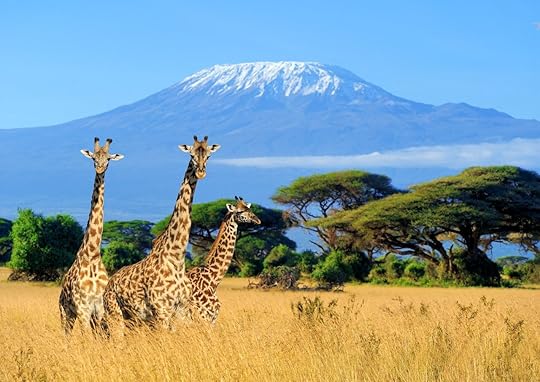
This year isn’t starting out with the best news. According to a draft plan released by the UN Convention on Biological Diversity on Monday, we only have 10 years to protect Earth’s biodiversity before mass extinction will become irreversible. The plan set global goals to fight the biodiversity crisis, including reducing carbon emissions and making strides toward food sustainability.
“Biodiversity and the benefits it proves,” the plan reads, “is fundamental to human well-being and a healthy planet. Despite ongoing efforts, biodiversity is deteriorating worldwide and this decline is projected to continue or worsen under business-as-usual scenarios.”
The convention hopes to stabilize our biodiversity by 2030 with an optimistic recovery date of 2050, though it will take a concerted effort from the global community to make this a reality. Among these goals are giving protected status to at least 30 percent of important biodiversity sites, cutting pollution by 50 percent, ensuring that trade of all wild species is legal, making the economic sector more sustainable, and involving indigenous communities in conservation efforts.
As scientists believe Earth is in the middle of its sixth mass extinction event, rising population, depleted resources, and dwindling biodiversity are the main culprits. If efforts are made to curb biodiversity loss and conserve resources, we may be able to pull ourselves out of this dire situation. 

More like this: 7 animals saved at the 11th hour, and why there is hope for the world’s species
The post UN sets 2030 goal for preserving biodiversity, staving off mass extinction appeared first on Matador Network.

Akon is building a futuristic city

If you were wondering what Akon’s been up to lately, well he now owns his own city in western Africa. Akon’s quest to create the world’s first city based 100 percent on digital currency appears to be coming to fruition, as the singer is now the official owner of Akon City in Senegal.
In July 2018, Senegal’s president Macky Sall gave Akon 2,000 acres of land near the country’s new airport, but it wasn’t official until this week, when he posted a photo of himself holding the signed agreement on Instagram.
View this post on InstagramA post shared by AKON (@akon) on Jan 13, 2020 at 5:53am PST
The Senegalese singer and producer has long been involved in charitable initiatives in Africa, and his latest venture is an effort to curb the currency instability on the continent.
Based just outside of the Senegalese capital, Dakar, Akon’s Crypto City, a sustainable tourism village, would revolve around the Akoin. Consumers would buy goods with Akoin right from their smartphones, which in theory would stimulate financial stability and encourage micro-exchanges. When asked specifically how these apps would function, Akon admitted at the Cannes Lions International Festival of Creativity that he’s more focused on the big picture than the details. “I come up with concepts,” he said, “and let the geeks figure [the details] out.”
According to Akon, construction on the city has already begun, with an estimated completion time of about 10 years. 
A version of this article was previously published on July 3, 2018, and was updated on January 15, 2020 with more information.

More like this: How I used Bitcoin trading to pay for my travels
The post Akon is building a futuristic city in Senegal appeared first on Matador Network.

Gwyneth Paltrow Mediterranean cruise

Cruises should be all about indulging in pastry buffets and poolside Margaritas, but if you’re looking for a healthier sailing, Gwyneth Paltrow has just the alternative for you. Paltrow is taking her lifestyle brand Goop to the sea, partnering with Celebrity Cruises for the ultimate wellness experience on the Mediterranean.
The cruise will take place aboard the new Celebrity Apex ship, departing from Barcelona on August 26. It’ll take Goopers to Spain, France, and the Italian Riviera.
Passengers will be joined by Paltrow and Elise Lonehan, Goop’s chief content officer, who will lead “mind, body and soul” sessions, along with a live Q&A for one “wellness day” out of the 11-day cruise. Overall, the cruise plans to focus on mental health, emotional well-being, and physical exercise.
Tickets for the “wellness day” cost $750, available to guests who book Suite Class accommodations on Celebrity Apex’s Mediterranean sailing. Space is limited so you’re advised to book quickly. 

More like this: Why a small cruise ship is the perfect solo getaway
The post Gwyneth Paltrow organizes Goop wellness cruise in the Mediterranean appeared first on Matador Network.

Matador Network's Blog
- Matador Network's profile
- 6 followers



